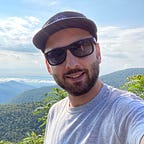Aconcagua Climb — A World First for People Living with Cerebral Palsy
Standing at 22,841 feet, Aconcagua is the highest mountain outside of Asia and the tallest mountain in South America. Ropes and technical gear are not required to summit Aconcagua. Although not a technical climb, a high level of physical and mental stamina is required to complete the trek. Climbers must be able to hike multiple days in a row, carrying 40- to 50-pound backpacks while gaining over 3,000 ft in elevation each day. Additionally, the effects of the high altitude can cause varying degrees of sickness and in some cases, death. It is estimated that only 40–50% of all people who attempt to summit Aconcagua succeed. In short, Aconcagua is a formidable mountain. In December of 2021, I’ll attempt to become the first person living with cerebral palsy to summit Aconcagua.
In many ways, this expedition will be far different from my Kilimanjaro trek in 2013. That one was a seven-day journey, while Aconcagua will take eighteen days to complete. Aconcagua is roughly 3,000 feet taller than Kilimanjaro, with considerably thinner air. Instead of carrying 20 pound bags, I will be loaded with 40 to 50 pound bags. For me, Aconcagua is the next evolutionary stage in my journey of continually pushing my limits and redefining my possible. Even though the climb may seem far away, my training starts in March of 2021. I will be training five days a week, and this will initially be a mixture of cardio, strength training, and stretching. I have hired the great folks at Uphill Athlete to help craft a customized and flexible training plan. To help increase my mental stamina, I will meditate on a daily basis. When facing strong winds, grueling terrain and altitude sickness on the mountain, a strong and disciplined mindset will be key to pushing through.
As I mentioned earlier, the physical demands of this mountain are considerable, even for the fittest of individuals. The symptoms of my cerebral palsy mainly affect the strength, flexibility and overall balance of my right leg. As a result, I will be training for almost a year, whereas most people start six months prior to their hike. No one with cerebral palsy has ever summited Aconcagua and it is my goal to be the first! On this blog, I will be posting occasional updates on my training efforts and other climb related matters. I can’t wait to share more details with you over the next ten months!
